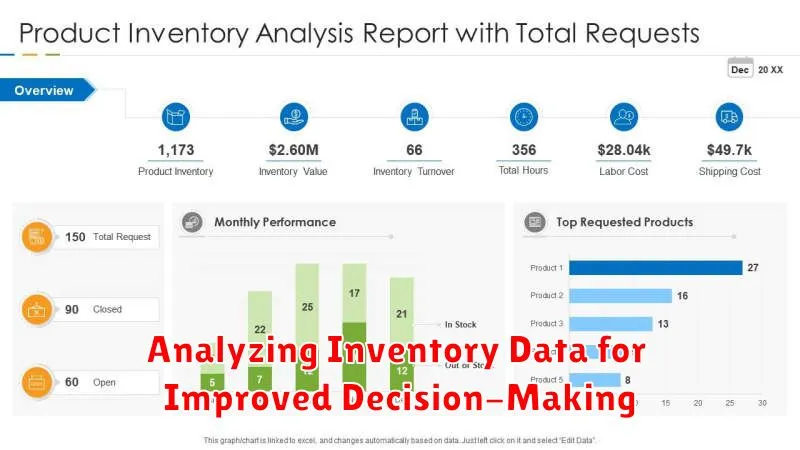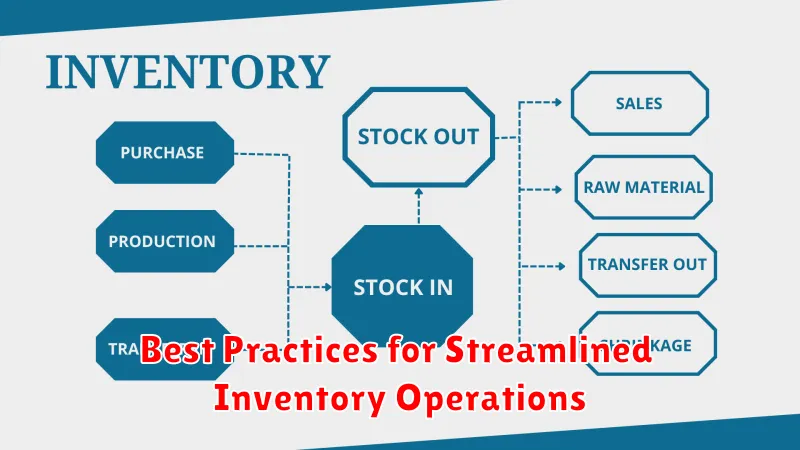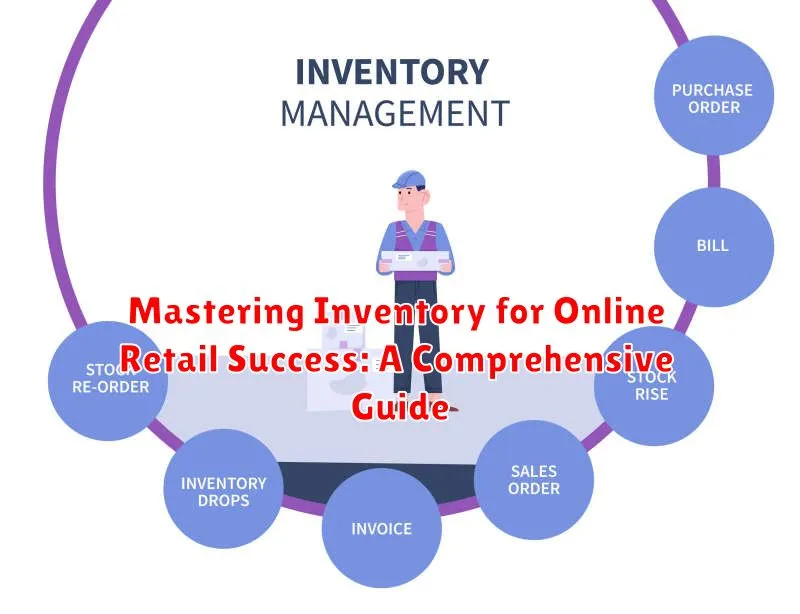In the dynamic landscape of online retail, effective inventory management is paramount to success. Mastering inventory is more than just stocking products; it’s a strategic balancing act that directly impacts profitability, customer satisfaction, and overall business growth. This comprehensive guide delves into the crucial aspects of online retail inventory management, providing actionable insights and best practices to optimize your operations and achieve sustainable success in the competitive e-commerce market. From forecasting demand and streamlining procurement to implementing efficient warehousing strategies and minimizing stockouts, this guide equips you with the knowledge and tools necessary to master inventory for online retail success.
Whether you’re a seasoned online retailer or just starting out, understanding the nuances of inventory control is essential. This guide will cover a range of topics including inventory tracking, demand forecasting, warehouse management, order fulfillment, and the use of inventory management software. By implementing the strategies outlined within this comprehensive resource, you’ll be empowered to reduce costs, improve efficiency, enhance customer satisfaction, and ultimately, master inventory for online retail success.
Understanding the Importance of Inventory Management
Effective inventory management is the backbone of successful online retail. It’s the delicate balancing act of having enough product to meet customer demand without tying up excessive capital in unsold stock. Poor inventory management can lead to lost sales, dissatisfied customers, and ultimately, a damaged bottom line.
Maintaining optimal inventory levels is crucial for several reasons. Firstly, it ensures that you can fulfill orders promptly, minimizing shipping delays and bolstering customer satisfaction. Secondly, it prevents stockouts, which can result in lost revenue and damage to your brand’s reputation.
Furthermore, effective inventory management helps minimize storage costs. Holding excess inventory takes up valuable warehouse space and ties up resources that could be used elsewhere. By accurately forecasting demand and optimizing stock levels, you can reduce these costs significantly.
Finally, sound inventory practices allow you to identify trends and adjust your purchasing strategies accordingly. By analyzing sales data and inventory turnover rates, you can gain valuable insights into customer preferences and make informed decisions about future stock orders. This proactive approach helps minimize the risk of obsolete inventory and maximizes profitability.
Key Components of Effective Online Retail Inventory Management
Effective online retail inventory management relies on several key components working together seamlessly. Accurate record-keeping is paramount, providing real-time visibility into stock levels, location, and movement. This involves meticulous tracking of incoming and outgoing products, returns, and any adjustments.
Demand forecasting plays a crucial role. By analyzing historical sales data, seasonality, and market trends, retailers can anticipate future demand and adjust inventory levels accordingly. This minimizes the risk of stockouts and overstocking.
Efficient order fulfillment is essential for customer satisfaction. This encompasses processes from picking and packing to shipping and delivery. Streamlined workflows and optimized warehouse layouts contribute to faster processing times and reduced errors.
Strategic supplier relationships are vital. Maintaining open communication with suppliers ensures timely delivery of goods and allows for flexibility in adjusting order quantities based on demand fluctuations. Negotiating favorable terms and exploring backup suppliers can further enhance inventory management efficiency.
Lastly, regular inventory audits are crucial for identifying discrepancies between recorded inventory and physical stock. These audits help uncover potential issues like theft, damage, or inaccurate data entry, allowing for prompt corrective action.
Choosing the Right Inventory Management System
Selecting the appropriate inventory management system is crucial for streamlining operations and maximizing profitability in online retail. The right system can significantly impact your ability to efficiently manage stock levels, track orders, and forecast demand.
Consider these factors when evaluating different systems:
- Business Size and Complexity: A small business with limited SKUs may find a basic spreadsheet sufficient, while a larger enterprise requires a more robust solution with advanced features like real-time tracking and analytics.
- Integration Capabilities: Ensure the system integrates seamlessly with your existing e-commerce platform, accounting software, and shipping providers to avoid data silos and manual entry.
- Scalability: Choose a system that can accommodate future growth and adapt to changing business needs. Consider factors like the number of users, storage capacity, and the ability to handle increasing order volumes.
- Cost and Features: Balance the system’s cost with the features offered. Prioritize essential features like inventory tracking, reporting, and forecasting, and avoid paying for functionalities you don’t need.
- User-Friendliness: Opt for a system with an intuitive interface that is easy to navigate and use. This minimizes the learning curve for your team and ensures efficient adoption.
Strategies for Optimizing Inventory Levels
Optimizing inventory involves balancing the cost of holding stock against the risk of stockouts. Effective strategies ensure sufficient supply to meet customer demand without tying up excessive capital in unsold goods. Several methods can be employed to achieve this balance.
The ABC analysis categorizes inventory based on value and consumption. High-value items (A) require tighter control and more accurate forecasting than lower-value, high-volume items (C). This allows for prioritized attention and resource allocation.
The Just-In-Time (JIT) inventory system aims to minimize inventory holding costs by receiving goods only as they are needed for production or sale. This strategy requires close coordination with suppliers and accurate demand forecasting.
Establishing reorder points is crucial. This involves setting a minimum stock level that triggers a new order. Calculating the reorder point considers lead time, demand rate, and safety stock to prevent stockouts during replenishment.
Regular inventory audits, both cycle counting and full physical inventories, help maintain accurate records and identify discrepancies. This ensures data integrity for informed decision-making.
Forecasting Demand and Avoiding Stockouts
Accurate demand forecasting is crucial for preventing stockouts and lost sales. Analyzing historical sales data is the foundation of effective forecasting. Identify trends, seasonality, and any external factors that may influence demand.
Leverage sales data from previous years, alongside marketing campaign data and website traffic analytics. This combined approach helps project future demand more accurately. Consider using statistical forecasting methods to identify patterns and predict future sales volumes.
Proactively managing safety stock is essential to buffer against unforeseen demand spikes or supply chain disruptions. While holding safety stock involves costs, it safeguards against lost sales opportunities. Calculate your safety stock levels based on lead times, demand variability, and acceptable risk tolerance.
Managing Returns and Damaged Goods
A robust return policy is crucial for online retail. Clearly define your return process for customers, outlining acceptable return conditions, timeframes, and associated costs. Efficiently processing returns is essential for maintaining a positive customer experience and minimizing losses.
Establish a standardized procedure for handling returned items. This includes inspecting items upon arrival, determining their condition (resalable, damaged, or defective), and updating inventory records accordingly. A dedicated area for processing returns can streamline operations.
Damaged goods require separate handling. Implement a system for assessing the damage and determining the root cause. This might involve collaborating with suppliers to identify manufacturing defects or reviewing internal handling processes for potential improvements. Clearly document all damaged goods and associated costs to track losses and inform preventive measures.
Integrating Inventory with Other Business Systems
Integrating your inventory management system with other crucial business systems is essential for efficient operations and informed decision-making. A cohesive system eliminates data silos and streamlines processes.
Key integrations include connecting your inventory with your:
- E-commerce Platform: Real-time inventory updates on your website prevent overselling and manage customer expectations.
- Order Management System (OMS): Automates order fulfillment, tracks shipments, and updates inventory levels based on sales.
- Accounting Software: Accurate inventory data feeds directly into your accounting system for precise financial reporting and cost tracking.
- Customer Relationship Management (CRM): Provides customer service teams with visibility into order history and product availability, enhancing customer experience.
- Supply Chain Management (SCM): Integrates with suppliers for automated purchase orders and optimized replenishment strategies.
By connecting these systems, you gain a holistic view of your business, enabling faster order processing, improved forecasting, and reduced operational costs.
Analyzing Inventory Data for Improved Decision-Making

Data analysis is crucial for optimizing inventory management and boosting profitability. By examining inventory data, online retailers can identify trends, predict demand, and make informed decisions.
Key performance indicators (KPIs) provide valuable insights into inventory performance. Tracking KPIs such as inventory turnover rate, carrying costs, and gross margin return on investment (GMROI) helps assess the efficiency of inventory management strategies.
Analyzing sales data reveals product performance, enabling retailers to identify bestsellers and slow-moving items. This information is crucial for optimizing stock levels and preventing stockouts or overstocking.
Demand forecasting utilizes historical sales data and other factors to predict future demand. Accurate forecasting allows retailers to proactively adjust inventory levels, minimizing storage costs and maximizing sales opportunities. Analyzing data also aids in identifying seasonal trends and anticipating peak demand periods.
Best Practices for Streamlined Inventory Operations

Efficient inventory management is crucial for online retail success. Streamlining operations minimizes costs and maximizes order fulfillment speed.
Implement these best practices for optimal inventory control:
- First-In, First-Out (FIFO): Prioritize selling older inventory to reduce the risk of obsolescence and spoilage. This is especially important for perishable goods or items susceptible to changing trends.
- Regular Cycle Counting: Conduct frequent, smaller inventory counts rather than infrequent, large-scale counts. This allows for proactive identification and correction of discrepancies and minimizes disruption to daily operations.
- Demand Forecasting: Utilize historical sales data, market trends, and seasonality to predict future demand. Accurate forecasting helps optimize stock levels, avoiding stockouts and overstocking.
- Standardize Procedures: Establish clear, documented processes for receiving, storing, picking, and shipping inventory. Standardized procedures reduce errors and increase efficiency.
- Quality Control: Implement robust quality control checks throughout the inventory process, from receiving to shipping, to minimize the risk of damaged or defective products reaching customers.

